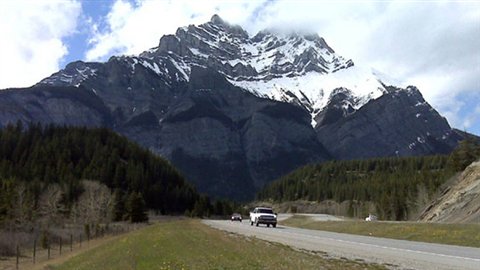
While Canada should be praised for creating new parks, it should also be criticized for ’inappropriate’ development that poses serious risk to park ecosystems, says environmental group Canadian Parks and Wilderness Society (CPAWS) in its annual report.
“Funding cuts and development pressures are still problems, but there have been some major highlights in some regions of the country”, says CPAWS parks program director Alison Woodley.
“We’re very concerned about the impact [fracking] could have on park ecosystems”, Alison Woodley
Woodley cites the creation of Tursujuq Provincial Park, in northern Quebec as being a “really huge step forward”.
“This is an area that is four times the size of Prince Edward Island that is now protected in a provincial park, in collaboration with the Inuit and the Cree of the area”.

Nova Scotia’s and Saskatchewan’s efforts of expanding their parks and protected areas are also lauded by the report.
While Manitoba is praised for its new parks strategy, the province is criticized for ‘allowing continued mining’ in some areas.
The report expresses concern over what it calls inappropriate development, which means both problematic industrial developments just outside the boundaries of parks or commercial and tourism development inside parks.
“In Banff in the last year, a proposal to allow large-scale summer use of Mount Norquay Ski area has been approved, and that’s a problem, because that area is also an important habitat for grizzly bears,” says Woodley.
One of the main concerns raised by the report is a proposal to drill and ‘frack’ for oil within metres of Gros Morne National Park, in Newfoundland, a UNESCO World Heritage Site.
“If that proposal goes ahead, we’re very concerned about the impact it could have on park ecosystems, because of the enormous environmental problems that ‘fracking’ can cause.”
Woodley is also concerned about the impact on the existing tourism industry, which is based on the pristine natural beauty of the park.
“To industrialize that landscape is incompatible with [its] existing economic value” she says.
Besides reviewing federal and provincial performances in 2013, the report also highlights some opportunities for progress over the next year.
Alison Woodley, Canadian Parks and Wilderness Society parks program director, talks to Gilda Salomone about CPAWS annual report.
ListenExternal links
CPAWS’ 2013 State of Canada’s Parks Report: One step forward, two steps back for Canada’s parks